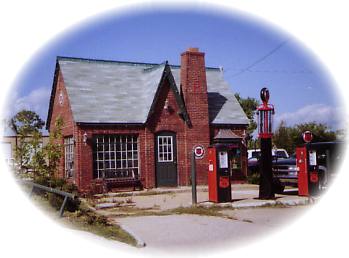
Union Official Records Report of the Battle (O.R. SERIES I VOLUME XXII/2 S# 33)
Early in 1864 approximately 1,500 Union soldiers under Colonel William A. Phillips set out on an expedition to cut a swath through Confederate Indian Territory from the Arkansas River to the Red River.
The Purpose was to bring the area under Union control and to offer the amnesty terms provided in President Lincoln's Emancipation Proclamation of the previous December. Colonel Phillips wanted not only to sever Confederate treaties with the tribes, but also to gain recruits from the Indians. Before departing Fort Gibson, Colonel Phillips told his men, "Soldiers! I take you with me to clean out the Indian Nation south of the river and drive away and destroy rebels. Let me say a few words to you that you are not to forget .... Those who are still in arms are rebels, who ought to die. Do not kill a prisoner after he has surrendered. But I do not ask you to take prisoners. I ask you to make your footsteps severe and terrible. Muskogees! (Creeks) the time has now come when you are to remember the authors of all your sufferings; those who started a needless and wicked war .... Stand by me faithfully and we will soon have peace ...."
On February 9 the Union troops reached the Boggy Depot area, where Colonel Phillips camped to wait for a large part of the 14th Kansas Cavalry under Colonel Thomas Moonlight to arrive from Fort Smith.
While waiting, Colonel Phillips sent an advance of about 350 men under Major Charles Willets to a known Boggy Depot outpost on Middle Boggy River (now known as Muddy Boggy). This force consisted of three troops of the 14th Kansas Cavalry and one section (two guns) of howitzers commanded by Captain Soloman Kaufman.
The Confederate forces at Middle Boggy may have numbered as many as 90 men and no artillery. They were composed of Captain Nail's Company "A" of the First Choctaw and Chickasaw Cavalry, a detachment of the 20th Texas Cavalry, and a part of Lieutenant Colonel John Jumper's Seminole Battalion of Mounted Rifles.
The Confederate forces were completely surprised when Major Willets first shelled and then attacked them. The Confederates fought desperately for approximately thirty minutes before scattering into the surrounding woods, dashing for the safety of Colonel Jumper and the remainder of his Seminole Battalion who were camped at Boggy Depot.
Colonel Jumper and his troops had heard the howitzers firing and had begun to ride toward the encampment when they met Captain Nail and the survivors of the battle.
By the time Colonel Jumper's regiment and the survivors arrived at the battlefield, Major Willets had occupied Middle Boggy, learned of the approaching Seminoles, and retreated to Colonel Phillip's camp.
However, Major Willets, following the directives he had been given, had taken no prisoners. The bodies of the wounded that Captain Nail had left behind were discovered on the ground with their throats cut.
Major Willets reported no Union casualties. The Confederate dead numbered forty-seven. They were buried near the battlefield.
A re-enactment of the Battle of Middle Boggy is hosted every 3rd year by the Atoka County Historical Society. The next re-enactment will be held in the year 2003.